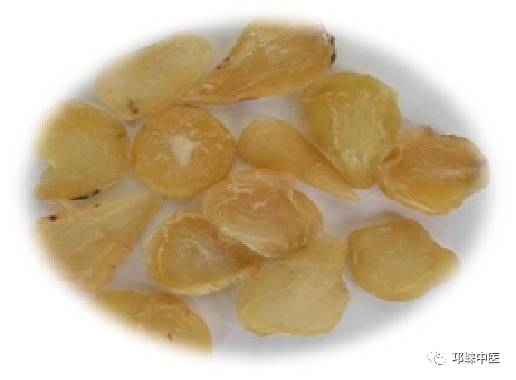Fuzi (Aconiti Radix) is the tuberous root of the plant Aconitum carmichaeli Debx, belonging to the Ranunculaceae family. Chuanwu (Chuanwu Tuber) and Fuzi are from the same plant species. Chuanwu is the main root, while Fuzi grows alongside it, resembling a child attached to its mother.
Fuzi is pungent, sweet, and extremely hot, and it is toxic.


Classification of Fuzi

Fuzi is classified into “Salted Fuzi,” “Black Fuzi slices,” “White Fuzi slices,” and processed Fuzi, depending on the processing method.
After harvesting Fuzi, the skin and soil are removed, and it is properly cleaned before being soaked in brine, which is called Salted Fuzi. When sliced, if cut along the grain, it is called Shun slices; if cut across, it is called Heng slices. After slicing, it is soaked in water to remove the saltiness, resulting in淡附片 (Dan Fuzi slices). Slices of 0.3 cm thick are treated with sulfur to lighten their original color, known as White Fuzi slices. Slices of 0.5 cm thick, when mixed with vegetable oil, scorched rice, brown sugar, and coloring agents, become Black Fuzi slices. Therefore, Fuzi is generally processed and not used raw.

Functions and Indications

Since the Song Dynasty, Fuzi has been recognized as a local medicinal material from Sichuan, as noted in the “Zhangming Fuzi Record,” indicating its fame at that time.

Fuzi is extremely pungent and hot, with a pure Yang nature, capable of strongly tonifying the original Yang, dispelling Yin cold, and rapidly restoring lost Yang. It is known as the “first medicine to revive Yang and rescue from reversal,” essential for treating Yang deficiency, cold skin, and weak pulse.
Fuzi’s hot and pungent nature allows it to circulate through the twelve meridians, warming the Yang Qi of the body, assisting the heart Yang to open the vessels, warming the spleen Yang to disperse cold, and tonifying the kidney Yang to enhance fire, while also expelling surface cold. “For all three Jiaos, meridians, and various organs, if true cold exists, it can be treated” (from “Bencao Zhengyi”).
It is suitable for conditions such as insufficient heart Yang, chest obstruction and heart pain, cold-induced vomiting and diarrhea, abdominal cold pain, kidney Yang deficiency, impotence, cold limbs, and Yang deficiency with external pathogens.

Compatibility Applications


Fuzi with Danggui (Angelica Sinensis)
Fuzi warms and tonifies Yang Qi, while Danggui nourishes the liver blood. Since Yin is rooted in Yang, Qi can generate blood; when used together, Fuzi enters the blood aspect, and Danggui enhances the warming and transporting power. This combination is used to treat spleen and stomach Yang deficiency with blood in the stool, as well as Yang deficiency with cold stagnation and accompanying blood stasis in dysmenorrhea and amenorrhea.

Fuzi with Ren Shen (Ginseng)
This combination supports Qi and stabilizes collapse while simultaneously reviving Yang and rescuing from reversal. It is used to treat extremities turning cold, profuse sweating, and a faint pulse indicating a sudden Yang Qi collapse.

Fuzi with Gan Cao (Licorice) and Gan Jiang (Dried Ginger)
Firstly, this combination reduces the toxicity of Fuzi, as they have a mutual restraint relationship; Fuzi is restrained by Gan Jiang or Gan Cao, which can neutralize Fuzi’s toxicity, thus reducing its harmful effects.
Secondly, it enhances efficacy, creating a synergistic relationship that strengthens the effect of reviving Yang and rescuing from reversal. Gan Jiang also has a Yang-reviving effect, especially in enhancing efficacy and reducing toxicity, making this a very special and important combination.

Dosage and Administration

Due to its toxicity, Fuzi requires prolonged cooking and processing. Its dosage and administration should follow medical advice.
In folk practices, Fuzi is often used in winter for food therapy, such as stewing meat or lamb, where the dosage is relatively large, and it is crucial to ensure a long cooking time.
Excessive heat can injure Yin, promote heat, and it is contraindicated for those with Yin deficiency, Yang excess, and pregnant women.


